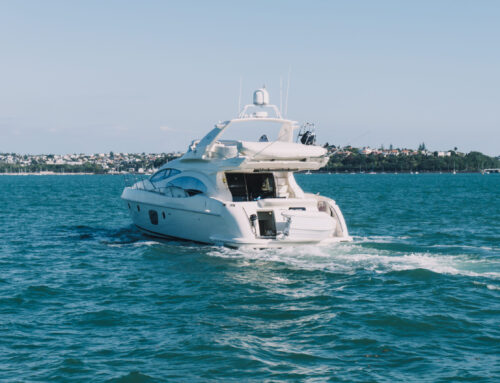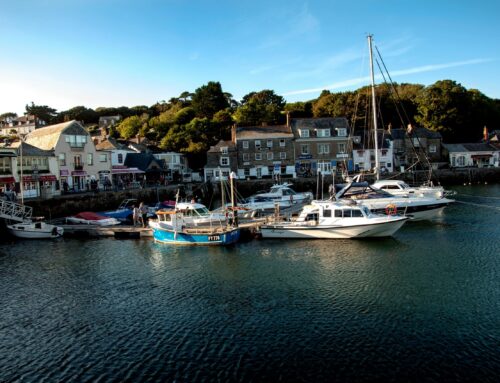Bringing an old yacht back to life can feel like a big job, but it’s also one of the most rewarding projects for any boat owner. Whether your vessel needs a full overhaul or just some careful touch-ups, knowing where to start makes all the difference. With the right tools, patience, and know-how, you can restore both function and charm without losing what made your boat special in the first place. These classic yacht restoration tips will help you tackle everything from woodwork to wiring, so you can enjoy more time on the water and less time worrying about repairs.

Assess the Hull and Structural Integrity First
Start by checking the hull. This is where most problems begin on older boats. Walk around the vessel and look for soft spots, cracks, or signs of worn-out material. Tap along different areas with a small hammer or mallet. A dull sound could mean damage inside. A sharp sound usually means it’s solid.
Move to the keel next. Make sure it’s not loose or warped. If it’s shifted even slightly, it can affect how the boat handles on water later. Look closely for rust if there’s metal involved, or swelling if it’s wood-based. These early checks help avoid bigger repairs down the line.
Frames need your attention too. These support everything else, so they must be in good shape before you start working on anything cosmetic like paint or polish. Use a flashlight and inspect every joint and corner where moisture might collect over time. Pay attention to discolouration which may signal hidden issues.
Use a screwdriver to gently press into suspect areas – especially near joints and seams – to test for rot or softness beneath the surface layer. Take notes as you go so nothing gets missed when planning repairs.
If you’re unsure about what you find during this step, bring in someone with experience in restoring vintage boats to give a second opinion.
Following these classic yacht restoration tips right from the start helps avoid wasted effort later on things that might need undoing if structural problems go unaddressed.
Don’t rush through this part just because it doesn’t feel exciting yet – getting these basics right makes everything smoother going forward. Once you’ve handled structure and stability, you can move on with more confidence toward other parts of your project like rigging, hardware, or interior fixes without second-guessing your base foundation choices.
Preserve Original Features Wherever Possible
Keeping the original parts of your yacht should be one of your first steps. Items like teak decks, brass fixtures, and old gauges help tell the boat’s story. These pieces carry real value, both in terms of history and money. Swapping them out for modern parts might make things easier short-term, but it takes away from what makes the vessel unique.
Start by checking what can be saved. Look at wood panels, deck planks, or wheel components before deciding to toss anything out. Sanding down old teak may bring back its strength and look without needing full replacement. If a brass handle is worn or dull, polishing it could give it new life while keeping its original form.
Instruments from earlier times may not always function perfectly anymore, but many shops specialise in fixing vintage equipment. You can often find someone who knows how to tune up an old compass or oil gauge without replacing it with something new. That way you keep the same look on your dash while still getting practical use out of it.
Even when a part is beyond repair, try finding used versions from similar boats rather than buying brand-new ones. Salvage yards or online forums often have listings for hard-to-find parts that match older vessels better than current models do.
When following classic yacht restoration tips, always think about what made the boat special in the first place. Keeping those features intact helps maintain its true identity over time.
It’s not just about looks either – some older materials were built to last longer than newer ones today. So restoring instead of replacing isn’t just about style – it can also mean better quality in some areas if done right.
Every piece you save adds to the boat’s history and story going forward.
Follow Proven Classic Yacht Restoration Tips
Start by looking for materials that match the original build. Older yachts used parts and wood types that may not be common today. Try to find suppliers who specialise in vintage marine equipment. This helps keep the structure close to how it was first made. Using modern substitutes can change how the boat handles or even reduce its value.
Stick with traditional methods when possible. Many older boats were built using hand tools and manual techniques. Power tools can speed things up, but they also risk damaging delicate areas or removing too much material. If you’re unsure about a task, speak with someone who has worked on similar projects before.
Document each step of your process as you go along. Take photos of damaged areas before repairs begin and write down what you do each day. This makes it easier if something goes wrong later or if another person needs to continue where you left off.
Avoid guessing when it comes to hardware, fittings, or rigging styles. Use books, old manuals, or online forums focused on vintage vessels to get accurate references. Some owners even find original blueprints from archives or previous owners.
Stick to classic yacht restoration tips shared by skilled restorers who have handled these types of boats for years. Their advice often includes small steps that make a big difference – like how long to soak wood before shaping it or which type of caulking holds best over time.
Don’t skip safety checks during your project either. Old wiring systems might need full replacement instead of patchwork fixes. Make sure tanks and fuel lines meet current standards without altering their position too much from the original layout.
Taking time to follow trusted guidance helps avoid errors that could cost more later on – both in money and effort spent fixing them again later down the line.

Upgrade Systems for Modern Safety Standards
Restoring a yacht isn’t just about sanding wood or polishing brass. Beneath the surface, systems like wiring, plumbing, and navigation tools need close attention. These parts may not be visible at first glance, but they play a big role in keeping your boat safe and dependable.
Start with the electrical setup. Older yachts often have outdated or worn-down wiring that can cause problems. Replacing old wires with new marine-grade cables helps prevent shorts, power loss, or worse – fires. Check circuit breakers and install a modern panel if needed. This step helps avoid future headaches when you’re out on the water.
Next up is plumbing. Pipes from decades ago may leak or clog easily. Swap them out for newer materials that last longer and handle pressure better. Look at freshwater tanks too – they might hold rust or residue after years of sitting idle. Clean them thoroughly or consider replacing them to keep water clean and flowing right.
Navigation gear also deserves an upgrade during any serious overhaul. Old compasses and paper charts still have their place, but adding GPS units, depth finders, and updated radios gives you more control while cruising. These tools improve safety by helping you track your course clearly – even in rough weather.
While it’s tempting to focus only on how your vessel looks above deck, these behind-the-scenes updates matter just as much – if not more – for peace of mind during every trip.
Adding these steps to your list of classic yacht restoration tips ensures you’re not just fixing up appearances – you’re building something reliable that performs well every time it leaves the dock.
Taking care of these basic upgrades now saves time later when small issues turn into bigger ones out at sea. Plus, knowing everything runs properly lets you enjoy the ride without second-guessing what’s going on below deck or behind the helm station.
Bringing New Life to a Seafaring Legacy
Restoring a classic yacht is more than just a project, it’s a passion that blends craftsmanship with respect for maritime history. By starting with a thorough assessment of the hull and structure, preserving original features, and following time-tested classic yacht restoration tips, you can breathe new life into your vessel without losing its soul. Modern safety upgrades ensure your yacht is seaworthy while still honoring its vintage charm. With the right mix of care and know-how, you’re not just fixing up an old boat—you’re reviving a timeless treasure for future adventures on the water.



